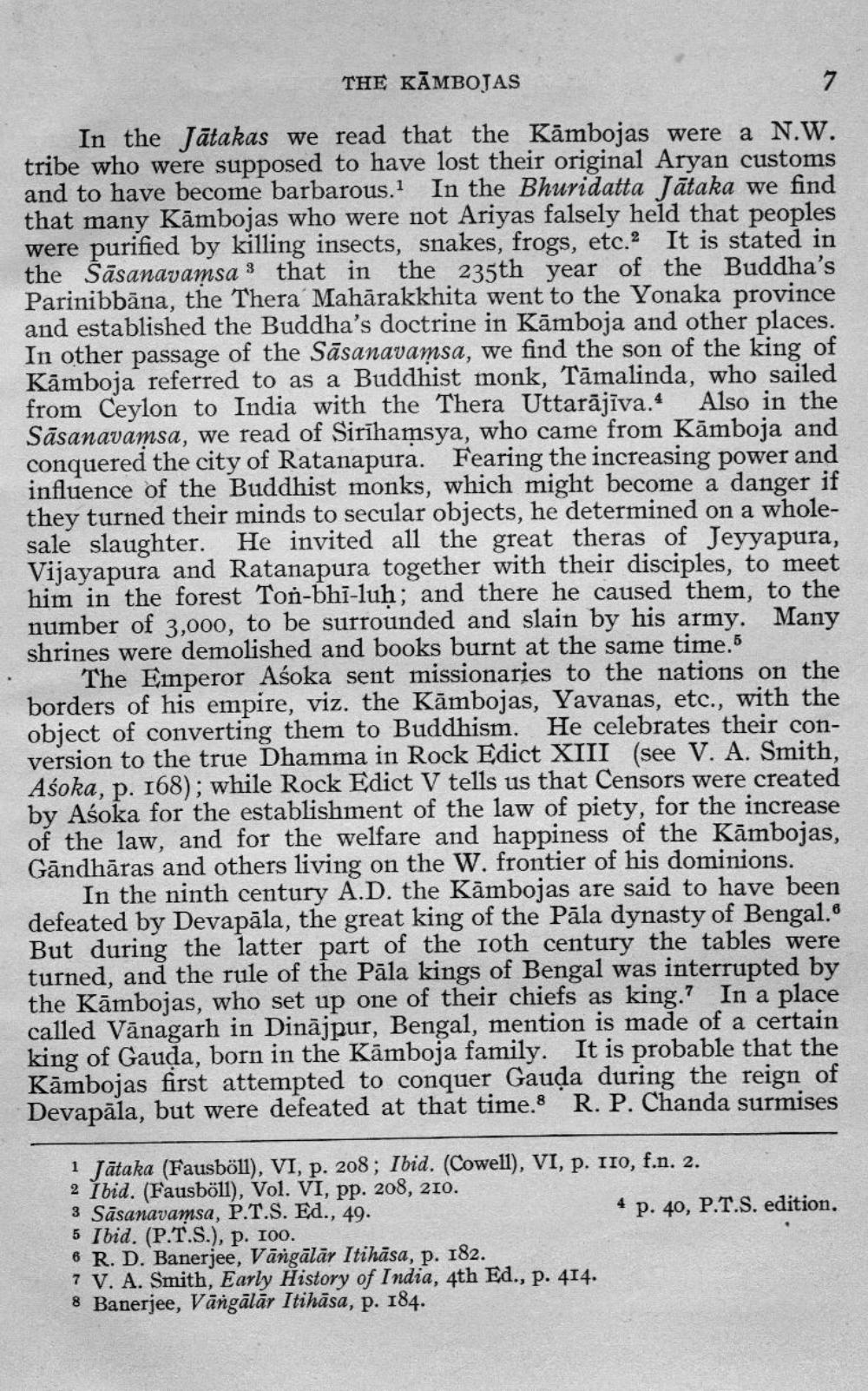________________
THE KĀMBOJAS
In the Jātakas we read that the Kambojas were a N.W. tribe who were supposed to have lost their original Aryan customs and to have become barbarous. In the Bhuridatta Jātaka we find that many Kāmbojas who were not Ariyas falsely held that peoples were purified by killing insects, snakes, frogs, etc. It is stated in the Sāsanavamsa 3 that in the 235th year of the Buddha's Parinibbāna, the Thera Mahārakkhita went to the Yonaka province and established the Buddha's doctrine in Kāmboja and other places. In other passage of the Sāsanavamsa, we find the son of the king of Kamboja referred to as a Buddhist monk, Tāmalinda, who sailed from Ceylon to India with the Thera Uttarājīva. Also in the Sāsanavamsa, we read of Sirihamsya, who came from Kāmboja and conquered the city of Ratanapura. Fearing the increasing power and influence of the Buddhist monks, which might become a danger if they turned their minds to secular objects, he determined on a wholesale slaughter. He invited all the great theras of Jeyyapura, Vijayapura and Ratanapura together with their disciples, to meet him in the forest Ton-bhi-luh; and there he caused them, to the number of 3,000, to be surrounded and slain by his army. Many shrines were demolished and books burnt at the same time.5
The Emperor Asoka sent missionaries to the nations on the borders of his empire, viz. the Kāmbojas, Yavanas, etc., with the object of converting them to Buddhism. He celebrates their conversion to the true Dhamma in Rock Edict XIII (see V. A. Smith, Asoka, p. 168); while Rock Edict V tells us that Censors were created by Asoka for the establishment of the law of piety, for the increase of the law, and for the welfare and happiness of the Kāmbojas, Gāndhāras and others living on the W. frontier of his dominions.
In the ninth century A.D. the Kāmbojas are said to have been defeated by Devapāla, the great king of the Pāla dynasty of Bengal. But during the latter part of the roth century the tables were turned, and the rule of the Pāla kings of Bengal was interrupted by the Kāmbojas, who set up one of their chiefs as king.? In a place called Vānagarh in Dinājpur, Bengal, mention is made of a certain king of Gauda, born in the Kāmboja family. It is probable that the Kāmbojas first attempted to conquer Gauļa during the reign of Devapāla, but were defeated at that time.8 R. P. Chanda surmises
1 Jātaka (Fausböll), VI, p. 208; Ibid. (Cowell), VI, p. 110, f.n. 2. 2 Íbid. (Fausböll), Vol. VI, pp. 208, 210. 3 Sasanavamsa, P.T.S. Ed., 49.
4 p. 40, P.T.S. edition. 5 Ibid. (P.T.S.), p. 100. 6 R. D. Banerjee, Vāngālār Itihāsa, p. 182. 7 V. A. Smith, Early History of India, 4th Ed., p. 414. 8 Banerjee, Vāngālār Itihāsa, p. 184.




